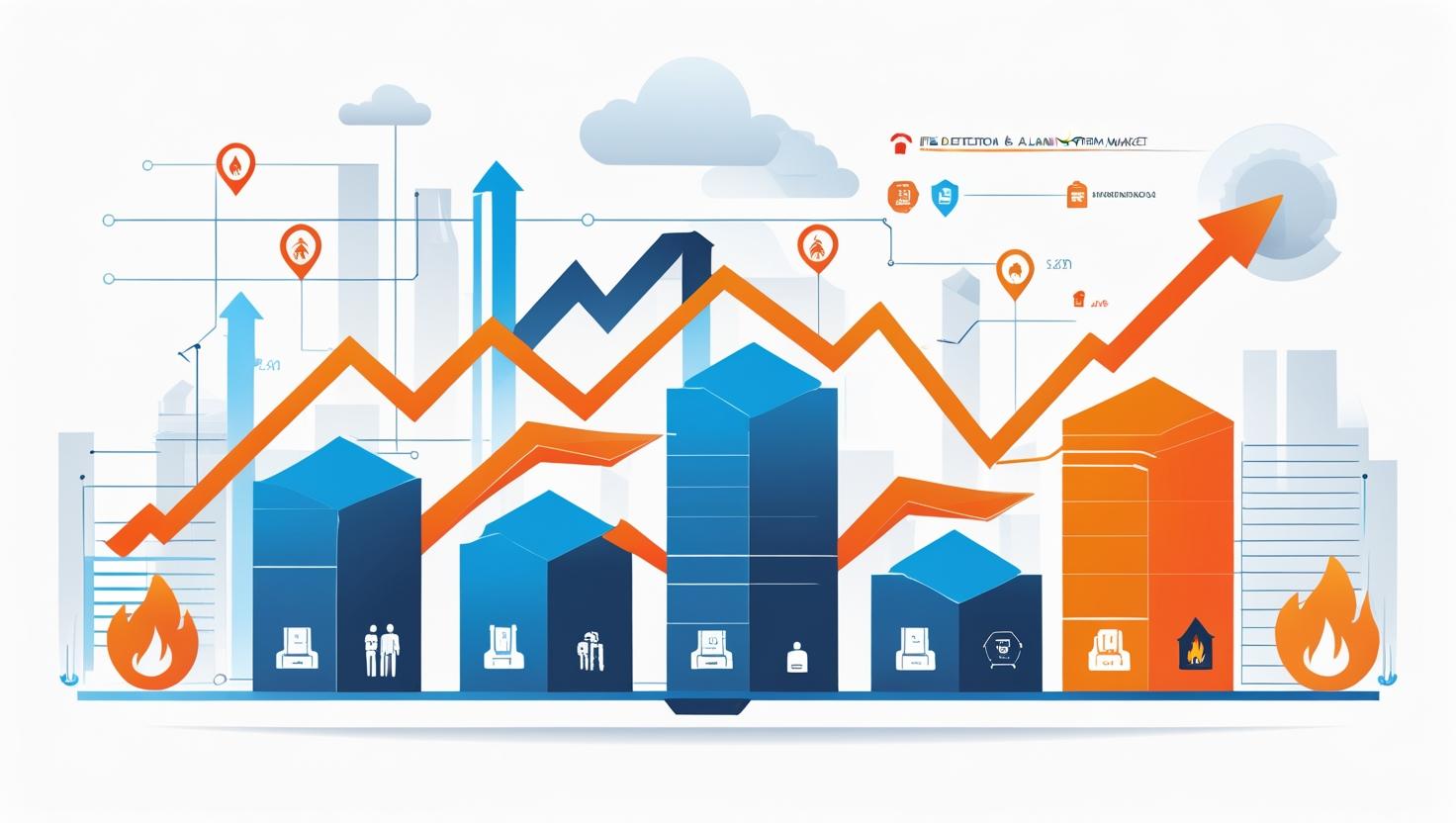In today’s fast-evolving world, where smart buildings, industrial automation, and digital infrastructure form the backbone of global economies, fire detection and alarm systems have become more critical than ever before. Fire safety is not just about compliance with regulatory frameworks; it is about safeguarding critical assets, protecting human lives, and ensuring uninterrupted business operations. As the complexity of modern infrastructure increases, so does the demand for intelligent, reliable, and connected fire detection systems that can seamlessly integrate with smart technologies.
The Growing Need for Advanced Fire Safety Systems
With rapid urbanization, industrialization, and the expansion of commercial infrastructure, the risk of fire hazards has increased substantially. Traditional fire detection systems, though effective, often fall short in providing the real-time, predictive insights required for proactive fire management in today’s connected environments. This has led to the widespread adoption of intelligent fire detection and alarm systems that utilize sensors, AI-based analytics, and IoT connectivity to deliver early warnings and automate responses.
Industries such as oil & gas, manufacturing, data centers, healthcare, and transportation hubs are investing heavily in modern fire detection technologies to prevent catastrophic losses. In particular, critical infrastructure like airports, metros, hospitals, and power plants require sophisticated systems that can detect even the smallest abnormalities and trigger immediate alerts for rapid response.
Download PDF Brochure @
https://www.marketsandmarkets.com/pdfdownloadNew.asp?id=162940771

Integration of IoT and AI: Transforming Fire Safety
The digital transformation across industries has brought a new wave of innovation in fire safety technology. Fire detection and alarm systems are increasingly embedded with IoT sensors that collect real-time environmental data, such as temperature fluctuations, gas concentrations, and smoke particles. By leveraging cloud-based platforms, these systems enable centralized monitoring across multiple facilities, regardless of geographic location.
Artificial intelligence (AI) and machine learning (ML) are further enhancing fire detection capabilities by analyzing patterns and identifying anomalies that could indicate potential fire risks. Predictive maintenance algorithms are being deployed to ensure that fire alarm equipment remains operational at all times, reducing the likelihood of system failures during emergencies.
Moreover, the integration of fire detection systems with building management platforms allows facility managers to coordinate ventilation, evacuation routes, and emergency communication efficiently. This interconnected ecosystem ensures that when a fire threat is detected, all systems respond in harmony to mitigate risk and protect occupants.
Regulatory Influence and Market Growth
Stringent government regulations across regions like North America, Europe, and Asia-Pacific are driving the adoption of advanced fire detection systems. Regulatory bodies mandate the installation of certified fire alarm systems in residential, commercial, and industrial establishments. Compliance with standards such as NFPA (National Fire Protection Association) in the U.S. or EN 54 in Europe has led to significant investments in system upgrades and retrofitting.
Additionally, insurance companies often provide favorable premiums to businesses that adopt advanced fire detection technologies, further incentivizing market adoption. As a result, the global fire detection and alarm system market is projected to grow steadily over the next decade, with increasing demand from sectors such as smart cities, data centers, and industrial automation.
Future Outlook: Securing the Digital Future
Looking ahead, the fire detection and alarm system industry is poised for substantial transformation. Wireless and addressable fire alarm systems are gaining prominence, particularly in large-scale commercial environments where flexibility and scalability are essential. Voice evacuation systems, graphical control interfaces, and remote diagnostics will become standard features in the next generation of solutions.
Moreover, as sustainability and green building initiatives rise, fire safety systems will need to align with eco-friendly construction standards. Manufacturers are focusing on designing energy-efficient fire alarms with longer battery life and reduced maintenance needs, contributing to the overall efficiency of smart infrastructure.
Ultimately, in the digital age, securing critical infrastructure from fire hazards is not merely about detection; it’s about intelligence, automation, and proactive safety strategies. By embracing advanced technologies, the fire detection and alarm system industry will continue to play a pivotal role in creating safer, smarter, and more resilient environments for the future.
Major companies operating in industry include Johnson Controls (Ireland), Robert Bosch GmbH (Germany), Hochiki Corporation (Japan), Siemens (Germany), and Honeywell International Inc. (US)
Frequently Asked Questions (FAQ)
What is a Fire Detection & Alarm System?
A fire detection and alarm system is an integrated network of sensors, alarms, control panels, and communication devices designed to detect fire hazards, such as smoke, heat, or gas emissions, and alert occupants or emergency responders to take immediate action.
How do modern fire detection systems differ from traditional ones?
Modern systems leverage IoT sensors, artificial intelligence (AI), and cloud connectivity to provide real-time monitoring, predictive analysis, and remote management. Unlike traditional systems that only trigger alarms, intelligent systems can integrate with building automation for faster, coordinated responses.
Which industries are the primary users of advanced fire detection systems?
Industries such as manufacturing, oil & gas, transportation (airports, metros), healthcare (hospitals), data centers, commercial real estate, and energy (power plants) are among the largest adopters due to their critical infrastructure and high safety requirements.
What are addressable fire alarm systems?
Addressable systems assign a unique identifier to each device (detector or alarm), allowing precise identification of the exact location of a fire or fault within a building. This ensures faster and more targeted emergency responses.
